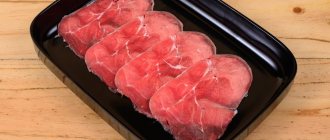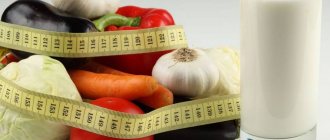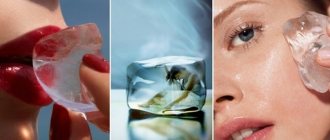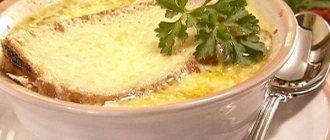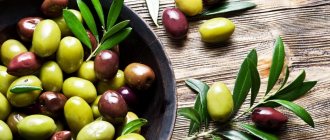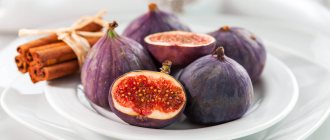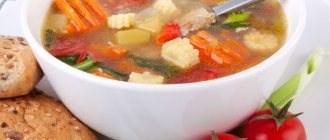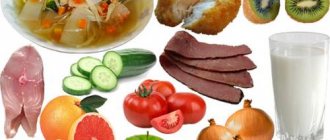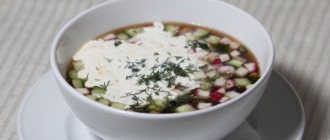29.01.2021 09:00
1257
The lipid-lowering diet is both a figure correction method and a health-improving technique. It is aimed at normalizing cholesterol levels in the blood, which is often the cause of excess weight, as well as the development of coronary heart disease and heart attack.
The lipid-lowering diet is both a figure correction method and a health-improving technique. It is aimed at normalizing cholesterol levels in the blood, which is often the cause of excess weight, as well as the development of coronary heart disease and heart attack. The nutritional system for certain indications is prescribed by a doctor, and it is not recommended to use it for weight loss.
General rules
Hyperlipoproteinemia is a symptom complex that is accompanied by excessive levels of lipids in the blood. Lipids are organic substances that, along with proteins and carbohydrates, are present in the body. The components of lipids are triglycerides , fatty acids , free cholesterol and its esters, and phospholipids .
In different diseases, the levels of lipid components change to varying degrees. With diabetes mellitus, most patients experience increased levels of triglycerides , and to a lesser extent cholesterol and LDL levels increase. In obesity , elevated levels of triglycerides , cholesterol and LDL are detected. Hypothyroidism is also accompanied by an increase in the level of atherogenic lipoproteins and a decrease in HDL.
The most common is hypercholesterolemia , which is found in 40-60% of the adult population. Its role in the development of cardiovascular diseases has been proven and a direct connection has been shown between increased cholesterol levels and mortality from these diseases.
Cholesterol in protein-bound form is transported to tissues. Low-density lipoproteins are the main carriers of it to tissues, so they are considered the main atherogenic lipoprotein, that is, playing a role in the development of atherosclerosis . High-density lipoproteins absorb free cholesterol and are a factor that counteracts the development of atherosclerosis.
The cause of hypercholesterolemia is a sedentary lifestyle, poor diet (excess animal fats and carbohydrates), smoking, and emotional overload. For any lipid metabolism disorders, a therapeutic lipid-lowering diet is recommended.
What is a therapeutic lipid-lowering diet? This is a diet aimed at reducing blood lipid levels. Its most important condition is the qualitative and quantitative correction of the fat part of the diet.
An important part of the diet consists of fresh and frozen vegetables, herbs and leafy salads.
The diet is limited to foods containing cholesterol and saturated fats (animal fats). Exclude butter, chocolate, cheese, sausages, pork, lard. At the same time, the content of polyunsaturated fats increases - various vegetable oils are used: corn, sunflower, olive, soybean, flaxseed.
The lipid-free diet has the following principles:
- Fractional meals (5-6 times).
- Reducing the amount of animal fats. To do this, you initially need to choose lean meat and fish and additionally remove visible fat. You can reduce the fat content in the product by pre-boiling and steaming or baking.
- Introduction of protein products (low-fat fish and poultry, low-fat dairy products, egg whites).
- Limiting simple carbohydrates (sweets, sugar, jam, confectionery), which are stored in the body as fat.
- Half of the calorie intake consists of complex carbohydrates (vegetables, berries, fruits, cereals, dried fruits). You need to eat 400-500 g of raw vegetables and fruits, one serving of porridge and 200-300 g of whole grain bread per day. All these products are sources of fiber, which is necessary to improve intestinal motility and remove excess cholesterol .
- Consumption of vegetable fats.
- Drink plenty of water (2 liters of water per day).
- Limit the number of yolks to 3 per week.
- The main method of cooking is boiling or steaming. Dishes in batter, deep-fried and breaded are completely excluded.
A table containing recommended and prohibited foods will help with proper nutrition.
| Allowed | Prohibited |
| Fresh and frozen vegetables, herbs and leafy salads. | Internal organs of animals and birds. |
| Peeled fruits, dried fruits, nuts and seeds. | Chocolate, ice cream, candies and other sweets, sugar, jam, jams. Limit the consumption of honey. |
| Cereals, bread (preferably with bran, rye, whole grain). | Baked goods (rolls, pies, cookies, crackers), pastries with cream, pasta, semolina, limit the consumption of white rice. |
| Vegetable oils: olive, corn, flaxseed, walnut, soybean, rapeseed. | Cooking fats, lard, all animal fats. |
| Sea fish, including fatty fish, kelp. | Crayfish, shrimp, canned fish, fish roe. |
| White poultry, beef. | Fatty meats, brisket, poultry skin and red meat, smoked meats and sausages, duck and goose meat. |
| Low-fat dairy products. | Fat cottage cheese, sour cream, cream and other high-fat dairy products. |
| Any juices, fruit drinks, decoctions of dried fruits, green tea, ginger tea, herbal tea. | Alcohol and carbonated drinks. |
A low-lipid diet can also be used to lose weight if you are overweight, even when there are no changes in blood tests. In this case, an antilipid diet is used prophylactically, since excess weight is a risk factor for elevated LDL cholesterol.
Weight loss is the first significant step to normalize lipid metabolism. The composition of the products does not differ, the difference is that the therapeutic diet for illness should be carried out for a long time (or constantly), and in case of increased weight it can be used until the desired weight is reached with a transition to a healthy diet.
Since the diet is balanced, you can stick to it constantly. A balanced, varied diet and the absence of significant restrictions will contribute to slow weight loss (up to one kilogram per week) with increased physical activity. For obesity, fasting days are indicated.
To reduce cholesterol levels, you need to additionally introduce foods into your diet that help reduce cholesterol levels:
- garlic;
- olive, flaxseed, nut, sesame, amaranth oil;
- fish fat;
- avocado;
- blackberries, chokeberries, strawberries, cranberries, red grapes, lingonberries;
- flax seeds, fenugreek, milk thistle and sesame seeds;
- fatty sea fish;
- seaweed;
- fruit juices;
- legumes (chickpeas, beans, lentils, soybeans);
- soy products (tofu, miso).
The level of low-density cholesterol increases with constant psycho-emotional stress, so an effect on the nervous system is a prerequisite.
Relaxation, meditation and taking sedatives help lower cholesterol. A prerequisite for treatment is an increase in physical activity.
Why do you need to control your cholesterol levels?
If you have a history of stroke or suffer from angina pectoris, or have suffered a myocardial infarction, i.e. have coronary heart disease, atherosclerosis of the arteries of the lower extremities (intermittent claudication syndrome), revascularization operations (restoration of vascular patency) on the vessels of the heart, cerebral vessels or arteries of the lower extremities , then the level of cholesterol in your blood should be monitored especially strictly. The above diseases, along with hypertension, smoking, excess body weight or a family history of heart disease (early development of coronary artery disease or stroke in blood relatives - in women under 65 years of age and men under 55 years of age) are significant risk factors and can lead to sudden death, heart attack or stroke. It is possible that, using special methods (coronary angiography, vascular ultrasound), doctors have already found atherosclerotic plaques in your vessels. In this case, by reducing the level of cholesterol in the blood, you act on the main cause of your disease - you deprive the plaque of building material and create the preconditions for its resorption.
Scientific research has found that when you reduce blood cholesterol by 1%, you reduce your chances of developing a heart attack or stroke by 2%. With effective cholesterol reduction, there is a 30-40% reduction in all cardiovascular complications and a 30% reduction in overall mortality. When a very low level of LDL cholesterol (1.5-2 mmol/l) is reached, an anatomical reduction or “resorption” of plaques is observed. However, it should be taken into account that improvement in the course of your disease occurs 6-12 months after the start of aggressive cholesterol reduction, which is 2-3 years ahead of the anatomical reduction of the plaque, especially in acute situations - for example, during acute myocardial infarction or revascularization procedures. It should be remembered that atherosclerosis is a chronic disease in which the process of formation of atherosclerotic plaques occurs constantly, unless there is an excess of cholesterol in the blood, and with the development of myocardial infarction or when restoring vascular patency through balloon angioplasty (with or without stenting) or aorto -coronary bypass surgery does not stop. Therefore, strict control over blood lipid levels must be constant, so be patient and do not forget that lowering cholesterol is the key to effective prevention of cardiovascular diseases and their complications. A long-term decrease in the level of cholesterol in the blood leads to a qualitative change in your blood vessels. Removing cholesterol from the blood leads to its release from the “depot” - the skin, blood vessels and, most importantly, plaques. There is a gradual replacement of fat lipids inside the plaque with dense connective tissue, plaques decrease in size and become denser, their surface becomes smooth. Dense plaques are much less dangerous in terms of the development of acute situations, such as heart attack and stroke, because their “tire” is less likely to tear with the formation of a wall thrombus, leading to complete blockage of the vessel. In addition, systematic reduction of cholesterol partially restores vascular elasticity and impaired endothelial function. Large clinical studies have proven that even a significant reduction in cholesterol levels is safe for cancer of any location. On the contrary, a more aggressive approach to reducing “bad” cholesterol with modern high-dose “statin” drugs helps to more quickly stabilize atherosclerotic plaques and further reduce the risk of heart attack or sudden death.
Authorized Products
Standard lipid-lowering diet, list of products:
- Fresh fruits and vegetables. They are best eaten raw and used as a side dish. Preference is given to low-carbohydrate vegetables (all types of cabbage, zucchini, pumpkin, squash, eggplant, cucumbers, avocado, sweet peppers, green peas, tomatoes). Healthy fruits include: persimmon, kiwi, grapefruit, pomegranates, oranges, apples and pears. Pay attention to fruits with a high content of pectins - these are citrus fruits, apples, grapes, cranberries, dried apples, dogwood berries, viburnum. Pectins normalize intestinal function, improve metabolism, absorb cholesterol and remove it.
- Juices: orange, grapefruit, apple, beetroot and carrot.
- Fish and seafood. They should form the basis of the diet for hypercholesterolemia. You need to eat lean fish, and if you have hypercholesterolemia, include fatty varieties in your menu 2 times a week: mackerel, flounder, herring, salmon, salmon. Fish roe and squid are limited due to their high cholesterol content.
- Sea kale. This product is rich in microelements (iodine, selenium) and fiber.
- Legumes as a source of vegetable protein and fiber. Can be included in your diet daily.
- Sesame seeds, fenugreek, flax, rice bran. Their benefits are considered in two aspects: they are sources not only of fiber, but also of phytosterols and oils, which together help in the fight against the disease. Corn, soybean and rapeseed oil, and almonds are also high in phytosterols. They are also found in vegetables and fruits. The shortage of their supply is noticeable in the winter and spring, due to a decrease in their consumption. At the same time, the share of consumed livestock products increases. During this period, it is advisable to additionally consume food products enriched with phytosterols, which are isolated from plant materials thanks to special technologies (for example, Danakor kefir, and “preventative 120/80”).
- Scientists have also proven that with the use of phytosterols, there is a decrease in the production of cortisol , which negatively affects the state of the cardiovascular system (increases the tone of the vessels and the strength of heart contractions, helps to increase blood pressure), retains sodium and water in the body.
- Soy and textured soy products. They are a source of protein and contain no cholesterol. If its level is high, patients are recommended to replace meat with soy products.
- Garlic is a natural statin . To get results you need to use 2 cloves daily for 3 months. Such treatment cannot be undertaken for gastrointestinal diseases.
- Vegetable first courses (cabbage soup, various soups, beetroot soup, borscht). They should be cooked in water. And add a minimum of vegetable oil.
- Lean meat and poultry. It is enough to use them 1-2 times a week. Turkey meat and chicken breast are considered dietary. The meat is boiled before cooking, and then you can bake it.
- Rye, grain, bran bread, crispbread and soy flour bread. As confectionery baked goods, you can use savory cookies and bran bread.
- Dairy products, cottage cheese and low-fat cheeses. Not too fatty sour cream can only be used in dishes.
- 3 whole eggs per week, and unlimited chicken whites.
- The list of products is complemented by cereals. You can eat buckwheat, oatmeal, and boiled brown rice in moderation. With obesity, the frequency of porridge consumption decreases.
- Unrefined vegetable oils. They are used to season ready-made dishes. You can eat 2 tbsp per day. l. Sesame, flaxseed, soybean, olive, and corn are useful.
- Nuts (almonds, walnuts, pine) and seeds. They contain healthy monounsaturated fats, but due to their high calorie content, the amount is limited to 20-30 g per day.
- Oatmeal broth or jelly, since oats help reduce cholesterol, excess weight and normalize lipid metabolism.
- Green tea with lemon, tea with ginger, rosehip infusion, degassed mineral water, juices.
Table of permitted products
| Proteins, g | Fats, g | Carbohydrates, g | Calories, kcal | |
Vegetables and greens | ||||
| greenery | 2,6 | 0,4 | 5,2 | 36 |
| eggplant | 1,2 | 0,1 | 4,5 | 24 |
| beans | 6,0 | 0,1 | 8,5 | 57 |
| zucchini | 0,6 | 0,3 | 4,6 | 24 |
| cabbage | 1,8 | 0,1 | 4,7 | 27 |
| broccoli | 3,0 | 0,4 | 5,2 | 28 |
| boiled cauliflower | 1,8 | 0,3 | 4,0 | 29 |
| bulb onions | 1,4 | 0,0 | 10,4 | 41 |
| carrot | 1,3 | 0,1 | 6,9 | 32 |
| cucumbers | 0,8 | 0,1 | 2,8 | 15 |
| salad pepper | 1,3 | 0,0 | 5,3 | 27 |
| salad | 1,2 | 0,3 | 1,3 | 12 |
| beet | 1,5 | 0,1 | 8,8 | 40 |
| celery | 0,9 | 0,1 | 2,1 | 12 |
| soybeans | 34,9 | 17,3 | 17,3 | 381 |
| asparagus | 1,9 | 0,1 | 3,1 | 20 |
| tomatoes | 0,6 | 0,2 | 4,2 | 20 |
| Jerusalem artichoke | 2,1 | 0,1 | 12,8 | 61 |
| pumpkin | 1,3 | 0,3 | 7,7 | 28 |
| beans | 7,8 | 0,5 | 21,5 | 123 |
| garlic | 6,5 | 0,5 | 29,9 | 143 |
| lentils | 24,0 | 1,5 | 42,7 | 284 |
Fruits | ||||
| avocado | 2,0 | 20,0 | 7,4 | 208 |
| oranges | 0,9 | 0,2 | 8,1 | 36 |
| pomegranate | 0,9 | 0,0 | 13,9 | 52 |
| grapefruit | 0,7 | 0,2 | 6,5 | 29 |
| pears | 0,4 | 0,3 | 10,9 | 42 |
| kiwi | 1,0 | 0,6 | 10,3 | 48 |
| lemons | 0,9 | 0,1 | 3,0 | 16 |
| mango | 0,5 | 0,3 | 11,5 | 67 |
| tangerines | 0,8 | 0,2 | 7,5 | 33 |
| nectarine | 0,9 | 0,2 | 11,8 | 48 |
| peaches | 0,9 | 0,1 | 11,3 | 46 |
| apples | 0,4 | 0,4 | 9,8 | 47 |
Berries | ||||
| gooseberry | 0,7 | 0,2 | 12,0 | 43 |
| Red currants | 0,6 | 0,2 | 7,7 | 43 |
| black currant | 1,0 | 0,4 | 7,3 | 44 |
Nuts and dried fruits | ||||
| nuts | 15,0 | 40,0 | 20,0 | 500 |
| cashew | 25,7 | 54,1 | 13,2 | 643 |
| sesame | 19,4 | 48,7 | 12,2 | 565 |
| flax seeds | 18,3 | 42,2 | 28,9 | 534 |
| fenugreek seeds | 23,0 | 6,4 | 58,3 | 323 |
| sunflower seeds | 20,7 | 52,9 | 3,4 | 578 |
Cereals and porridges | ||||
| buckwheat (kernel) | 12,6 | 3,3 | 62,1 | 313 |
| oat groats | 12,3 | 6,1 | 59,5 | 342 |
| cereals | 11,9 | 7,2 | 69,3 | 366 |
| millet cereal | 11,5 | 3,3 | 69,3 | 348 |
| barley grits | 10,4 | 1,3 | 66,3 | 324 |
Raw materials and seasonings | ||||
| honey | 0,8 | 0,0 | 81,5 | 329 |
Dairy | ||||
| skim milk | 2,0 | 0,1 | 4,8 | 31 |
| natural yogurt 2% | 4,3 | 2,0 | 6,2 | 60 |
Cheeses and cottage cheese | ||||
| cottage cheese 0.6% (low fat) | 18,0 | 0,6 | 1,8 | 88 |
| curd tofu | 8,1 | 4,2 | 0,6 | 73 |
Meat products | ||||
| beef | 18,9 | 19,4 | 0,0 | 187 |
| rabbit | 21,0 | 8,0 | 0,0 | 156 |
Sausages | ||||
| boiled diet sausage | 12,1 | 13,5 | 0,0 | 170 |
Bird | ||||
| chicken fillet | 23,1 | 1,2 | 0,0 | 110 |
| turkey | 19,2 | 0,7 | 0,0 | 84 |
Fish and seafood | ||||
| fish | 18,5 | 4,9 | 0,0 | 136 |
| squid | 21,2 | 2,8 | 2,0 | 122 |
| mussels | 9,1 | 1,5 | 0,0 | 50 |
| seaweed | 0,8 | 5,1 | 0,0 | 49 |
Oils and fats | ||||
| butter | 0,5 | 82,5 | 0,8 | 748 |
| linseed oil | 0,0 | 99,8 | 0,0 | 898 |
| olive oil | 0,0 | 99,8 | 0,0 | 898 |
| sunflower oil | 0,0 | 99,9 | 0,0 | 899 |
Non-alcoholic drinks | ||||
| mineral water | 0,0 | 0,0 | 0,0 | — |
| green tea | 0,0 | 0,0 | 0,0 | — |
| * data is per 100 g of product | ||||
Peculiarities
The diet takes into account the gender and age characteristics of the patient.
Gender
High cholesterol in women is associated primarily with their cravings for sweets, constant weight fluctuations (either dieting or overeating) and hormonal changes. Therefore, a lipid-lowering diet for them is based on limiting complex carbohydrates and prohibiting any fasting. In addition, it is compiled taking into account pregnancy, the postpartum period and the onset of menopause after 45-50 years. The most difficult thing is to give up cakes, ice cream, sweets, pastries, and fast food.
The advantage of this therapeutic nutrition system for women is the availability of an option for overweight. It allows you to reduce your daily caloric intake to the permitted level and keep your body weight under control without strict restrictions.
High cholesterol in men is usually diagnosed due to abdominal obesity, physical inactivity, and abuse of fatty and salty foods. Therefore, a lipid-lowering diet categorically prohibits them from drinking alcoholic drinks with high-calorie snacks, and also recommends that they simultaneously exercise, but in moderation, according to a separate program.
Age
If high cholesterol is diagnosed in a child, a lipid-lowering diet is prescribed to him with great caution and only with strict adherence to all the specialist’s recommendations. Despite the fact that for adults it involves a significant restriction of fats, in childhood this is unacceptable, as it will negatively affect the development of the nervous system. Therefore, the same dairy products should remain in the diet completely. But fast food and sweets should be limited (you shouldn’t ban them at all), finding healthy alternatives for them.
The same applies to those who were diagnosed with high cholesterol after 50 years of age. Restrictions should be approached with extreme caution, otherwise you can harm your health. The risk of diabetes also increases at this age. Therefore, you need to constantly monitor your blood glucose levels and take into account the glycemic index of foods when choosing a menu.
Fully or partially limited products
Exclude:
- By-products (internal organs of animals and poultry).
- Fatty pork, lard, cooking oils, coconut oil, palm oil, brisket, poultry skin and red meat.
- Duck, goose, smoked meat and sausage.
- Crayfish, shrimp, canned fish and fish roe.
- Baked goods (rolls, pies, cookies, crackers), pastries with cream, pasta, semolina, limit the consumption of white rice.
- Any broths, fried foods.
- Fat cottage cheese, sour cream, cream and other high-fat dairy products.
- Alcohol and carbonated drinks.
- Chocolate, ice cream, candies and other sweets. Limit the consumption of honey, jam, jams.
Table of prohibited products
| Proteins, g | Fats, g | Carbohydrates, g | Calories, kcal | |
Vegetables and greens | ||||
| radish | 1,2 | 0,1 | 3,4 | 19 |
| white radish | 1,4 | 0,0 | 4,1 | 21 |
| red radish | 1,2 | 0,1 | 3,4 | 20 |
| black radish | 1,9 | 0,2 | 6,7 | 35 |
| spinach | 2,9 | 0,3 | 2,0 | 22 |
| sorrel | 1,5 | 0,3 | 2,9 | 19 |
Fruits | ||||
| bananas | 1,5 | 0,2 | 21,8 | 95 |
Berries | ||||
| grape | 0,6 | 0,2 | 16,8 | 65 |
Mushrooms | ||||
| mushrooms | 3,5 | 2,0 | 2,5 | 30 |
Nuts and dried fruits | ||||
| raisin | 2,9 | 0,6 | 66,0 | 264 |
Cereals and porridges | ||||
| semolina | 10,3 | 1,0 | 73,3 | 328 |
| white rice | 6,7 | 0,7 | 78,9 | 344 |
Flour and pasta | ||||
| pasta | 10,4 | 1,1 | 69,7 | 337 |
Confectionery | ||||
| jam | 0,3 | 0,2 | 63,0 | 263 |
| jam | 0,3 | 0,1 | 56,0 | 238 |
| candies | 4,3 | 19,8 | 67,5 | 453 |
| pastry cream | 0,2 | 26,0 | 16,5 | 300 |
| cookie | 7,5 | 11,8 | 74,9 | 417 |
Ice cream | ||||
| ice cream | 3,7 | 6,9 | 22,1 | 189 |
Cakes | ||||
| cake | 4,4 | 23,4 | 45,2 | 407 |
Chocolate | ||||
| chocolate | 5,4 | 35,3 | 56,5 | 544 |
Raw materials and seasonings | ||||
| mustard | 5,7 | 6,4 | 22,0 | 162 |
| mayonnaise | 2,4 | 67,0 | 3,9 | 627 |
Dairy | ||||
| milk 3.6% | 2,8 | 3,6 | 4,7 | 62 |
| milk 4.5% | 3,1 | 4,5 | 4,7 | 72 |
| cream | 2,8 | 20,0 | 3,7 | 205 |
| sour cream 25% (classic) | 2,6 | 25,0 | 2,5 | 248 |
Cheeses and cottage cheese | ||||
| cheese | 24,1 | 29,5 | 0,3 | 363 |
| cottage cheese 11% | 16,0 | 11,0 | 1,0 | 170 |
| cottage cheese 18% (fat) | 14,0 | 18,0 | 2,8 | 232 |
Meat products | ||||
| pork | 16,0 | 21,6 | 0,0 | 259 |
| pork liver | 18,8 | 3,6 | 0,0 | 108 |
| pork kidneys | 13,0 | 3,1 | 0,0 | 80 |
| pork fat | 1,4 | 92,8 | 0,0 | 841 |
| salo | 2,4 | 89,0 | 0,0 | 797 |
| beef liver | 17,4 | 3,1 | 0,0 | 98 |
| beef kidneys | 12,5 | 1,8 | 0,0 | 66 |
| beef brains | 9,5 | 9,5 | 0,0 | 124 |
Sausages | ||||
| smoked sausage | 16,2 | 44,6 | 0,0 | 466 |
| smoked sausage | 9,9 | 63,2 | 0,3 | 608 |
| sausages | 10,1 | 31,6 | 1,9 | 332 |
| sausages | 12,3 | 25,3 | 0,0 | 277 |
Bird | ||||
| smoked chicken | 27,5 | 8,2 | 0,0 | 184 |
| duck | 16,5 | 61,2 | 0,0 | 346 |
| smoked duck | 19,0 | 28,4 | 0,0 | 337 |
| goose | 16,1 | 33,3 | 0,0 | 364 |
Fish and seafood | ||||
| smoked fish | 26,8 | 9,9 | 0,0 | 196 |
| salted fish | 19,2 | 2,0 | 0,0 | 190 |
| Red caviar | 32,0 | 15,0 | 0,0 | 263 |
| black caviar | 28,0 | 9,7 | 0,0 | 203 |
| canned fish | 17,5 | 2,0 | 0,0 | 88 |
| cod (liver in oil) | 4,2 | 65,7 | 1,2 | 613 |
Oils and fats | ||||
| animal fat | 0,0 | 99,7 | 0,0 | 897 |
| cooking fat | 0,0 | 99,7 | 0,0 | 897 |
Non-alcoholic drinks | ||||
| instant coffee dry | 15,0 | 3,5 | 0,0 | 94 |
| black tea | 20,0 | 5,1 | 6,9 | 152 |
| * data is per 100 g of product | ||||
↑ What products should you give up?
- Bakery pastries, pastries, cakes, muffins, cookies and the like.
- Potatoes - fried, fries, chips.
- Candies, ice cream, etc.
- Sugar, jams, preserves, preserves.
- Fermented milk products with high fat content, milk cream, condensed milk.
- The fatty part of chicken and fatty meat in general.
- Raw smoked and semi-smoked sausages, bacon, lard.
- Fast food, pizza.
- Some fish and caviar.
- Egg yolk.
- Seafood: lobster, squid, cuttlefish, oysters, shrimp and other shellfish.
- Canned pickles, especially vinegar-based, smoked ones.
- Fat and oil of animal origin.
- By-products: liver, heart, kidneys.
- Strong coffee or tea.
- Carbonated drinks.
- Alcohol (including low-alcohol drinks).
- Fatty broths and jellied meats.
- Overly spicy spices.
Menu for a standard lipid-lowering diet (Diet)
It is necessary to organize 5-6 meals a day so as not to feel the feeling of hunger that may arise due to calorie restriction. The right choice of meat and fish, the use of recommended cooking methods, the exclusion of “fast” carbohydrates and baked goods will affect your weight within a month. Taking into account all the recommendations, you can develop a menu for the week using fitness diet recipes.
| Breakfast |
|
| Lunch |
|
| Dinner |
|
| Afternoon snack |
|
| Dinner |
|
| For the night |
|
| Breakfast |
|
| Lunch |
|
| Dinner |
|
| Afternoon snack |
|
| Dinner |
|
| For the night |
|
| Breakfast |
|
| Lunch |
|
| Dinner |
|
| Afternoon snack |
|
| Dinner |
|
| For the night |
|
| Breakfast |
|
| Lunch |
|
| Dinner |
|
| Afternoon snack |
|
| Dinner |
|
| For the night |
|
| Breakfast |
|
| Lunch |
|
| Dinner |
|
| Afternoon snack |
|
| Dinner |
|
| For the night |
|
| Breakfast |
|
| Lunch |
|
| Dinner |
|
| Afternoon snack |
|
| Dinner |
|
| For the night |
|
| Breakfast |
|
| Lunch |
|
| Dinner |
|
| Afternoon snack |
|
| Dinner |
|
| For the night |
|
↑ What is a hypolipidemic diet
When following a lipid-lowering diet, the level of consumption of easily digestible carbohydrates and cholesterol substances in the human diet is reduced.
Harmful cholesterol is most found in foods that contain plant fibers in soluble and insoluble forms, as well as mono- and polyunsaturated fats. As you know, harmful cholesterol is deposited on the walls of blood vessels, forming atherosclerotic plaques. Because of them, blood circulation is disrupted, and blood clots and varicose veins form. But the worst thing is heart disease (stroke, heart attack, etc.). Elevated cholesterol levels have a negative impact on the course of diabetes. In this regard, this lipid-lowering diet is indicated for many pathological disorders.
Reviews and results
The first result of a lipid-lowering diet is weight loss. It is possible to achieve normalization of cholesterol levels only after 3 months. This explains the minimum terms of adherence to the diet. The deadline for using this therapeutic nutrition is not limited and, when indicated, it must be observed constantly.
In general, this diet is assessed as a transition to a healthy diet and should become the rule for patients with increased weight and lipid metabolism disorders. Limiting simple carbohydrates and saturated fats has a positive effect on digestion and overall health.
- “... With hereditary hypercholesterolemia, I have to follow a very strict diet. Cholesterol began to rise in my teens, although I was thin. For me, animal fats and fried foods, white rice, sweets, and sugar were prohibited. I allowed myself 2 eggs a week, and then switched to boiled whites and egg white omelettes. And all this time I tried to play sports or just walk a lot. All this made it possible to live without drugs for up to 45 years, and then they were prescribed”;
- “...The low-lipid diet helped me lose weight. I followed it for 2 months. I liked it - the menu is free, you can eat unlimited fruits and vegetables, enough meat, cottage cheese and fish. I even ate some bread and bran crispbread, but mostly there were vegetable dishes. She tolerated the absence of sweets relatively well, as she replaced them with nuts and dried fruits. I started making yogurt myself and began using it as a salad dressing, sometimes replacing vegetable oil. With such a relative limitation, of course, you should not hope for rapid weight loss. I read the opinion of nutritionists that this is even better. Overall, I lost 5 kg in 2 months and continue to do so, although my weight loss has slowed down.”
Quitting the diet
A lipid-lowering diet is essentially a lifestyle that can be followed for a long time with health benefits. It is usually recommended to follow it for a month, and then, if the desired result is achieved, gradually switch to a regular diet.
In the future, for at least 3 months, when creating a menu, you should adhere to the so-called “80x100” rule. 80% of the daily diet should consist of foods included in the list of permitted foods, and only 20% of new foods that were not used during the diet. It is advisable to preserve the principles of fractional nutrition and cooking using “healthy” methods forever. Then the weight loss results achieved with the help of a lipid-lowering diet will not be leveled out, and the extra pounds will no longer be gained.
Pros and cons of a lipid-lowering diet plan
Unlike most weight loss methods, the anti-lipid diet is easy to use. To comply with it, you don’t have to study a whole list of rules. The method is based on the concept of proper nutrition.
A lipid-lowering diet has the following advantages:
- if a fashionista is able to follow all the recommendations of a lipid-lowering diet plan, she will be able to achieve excellent results,
- During lipodemic nutrition, the feeling of hunger practically does not occur,
- By adhering to a lipid-lowering diet, a fashionista will feel light and cheerful,
- A lipid-lowering diet not only allows you to lose excess weight, but also prevents the occurrence of many diseases.
The hypoglycemic method has only one drawback - the list of permitted products consists of a limited list. If a fashionista wants to use a recipe for a dish that contains forbidden food, she will have to refuse to carry out the action.
Please note: A lipid-lowering diet can be used for high cholesterol, but for a number of other diseases it is better to avoid it.
Obstacles to compliance with low-lipid dietary standards are:
- pregnancy or breastfeeding period,
- lack of calcium in the body,
- insulin dependence,
- chronic diseases,
- diabetes.
The lipid-lowering figure correction regimen is not recommended for use by children under 18 years of age. To avoid possible problems, it is better to consult with a specialist before starting weight loss.
Video
